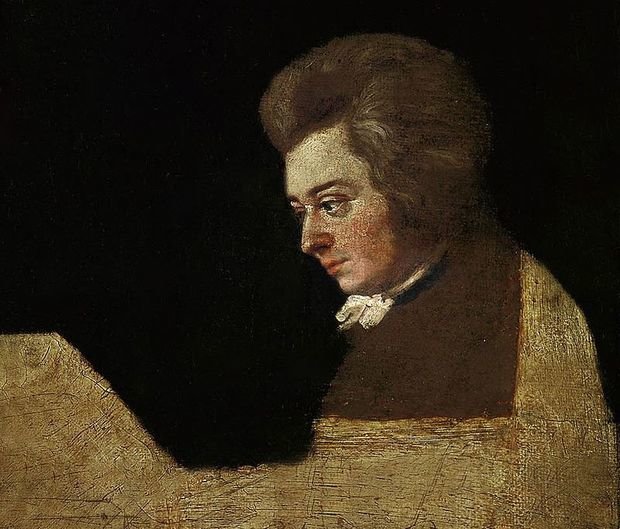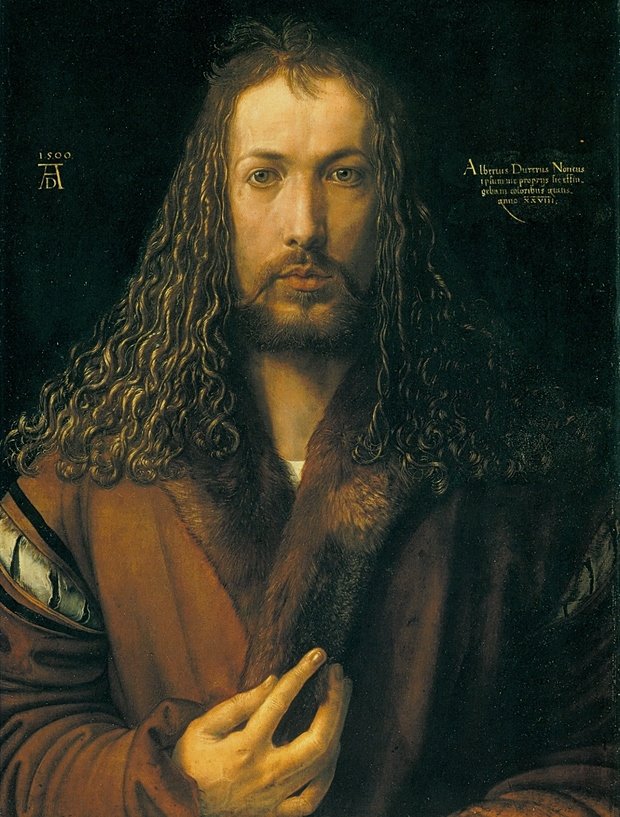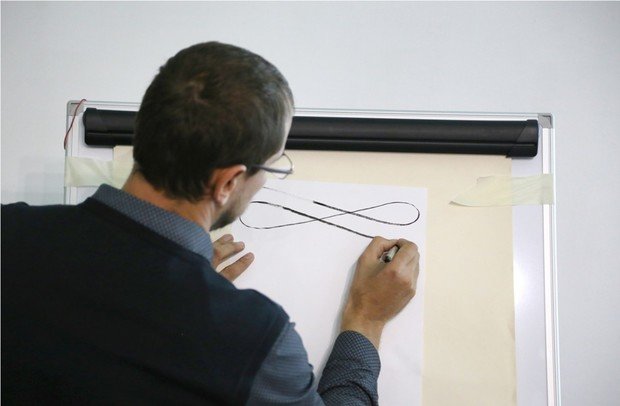Vladislav Baranov: what genius is and how to develop it by calligraphy
The lecture with the examples of what talented people distinguish from geniuses
Mozart, Dürer, da Vinci — are geniuses, who was different from ordinary people in something. In the lecture read in the walls of the Kazan Federal University by an artist and calligrapher, Vladislav Baranov gave the main characteristics of genius.
Realnoe Vremya online newspaper continues the publication of the lectures in the framework of the project 'Open Lectures'.
In contrast to talented people, geniuses do break rules
Who is genius? Most philosophers took it as a dogma that a talented person acts within the rules, for example, within the boundaries of the academic school, and geniuses break dogmas. Although this does not mean that if the works of geniuses do not correlate with academic direction. It is how Vladislav Baranov began the lecture about the origins of genius.
As an example he cited the fate of Wolfgang Amadeus Mozart. When Mozart showed Salieri a complex play, he said that it was impossible to play for one person because the play was necessary to be played by piano from different angles and to play notes in the middle, and do it simultaneously. In response, Mozart played with both hands, and the missing parties — with his nose.
''He broke the rules, but it doesn't mean that he didn't have education or good school. It is interesting to know who Mozart was, how he became a genius,'' Vladislav Baranov says. ''It is clear that Mozart was raised in the family of very good composer Leopold Mozart, who ran the orchestra at an archbishop.'' The parents noticed that Mozart already at the age of three liked to play the harpsichord repeating excerpts of plays, played by his sister. He could sit for hours playing the instrument.
The parents decided to develop the talent of the child. His father brought him to Vienna, to show the skill of the boy to rich people. Here he and his sister gave concerts for piano in four hands. Mozart was playing the piano covered with a cloth blindfolded. The success was incredible. Mozart already at the age of six had a phenomenal diligence: he gave two or three concerts a day which lasted for several hours. At the age of 14 he became an academician. Then he said, ''Dad, I have become an academician, can I go out for three hours?''
''Wolfgang Amadeus Mozart can be called a stubborn person. When he studied mathematics, starting calculations he covered floor and ceiling with his chalk writing. Nothing could distract him from his work. A normal child can sit in one place for only 15 minutes, psychologists claim,'' the artist says.

Geniuses don't consider themselves to be the best
Despite the success, Mozart did not hold his head high, Baranov says. He respected worthy people: with respect he spoke about the work of Austrian composer, representative of the Viennese classical school Joseph Haydn. Vladislav Baranov notes that in the modern world artists are in a hurry to call themselves the best.
''I was at a summer internship in Finland, I was reached by local students and showed the work of Finnish artists. They called them the best artists of Finland. I believe that if a person feels himself or herself the best, the growth of creative activity stops. If you are the best, why to do something else,'' Vladimir Baranov says.
He cited Renaissance Italian sculptor of Michelangelo Buonarroti as an example. Only when Michelangelo turned 90 he said that he started to understand how to paint. Although his contemporaries already during his lifetime considered him a genius.
Vladislav Baranov in the course of the lecture spoke about other geniuses:
''In the preserved treatises of German artist Albrecht Dürer, you can read about the requirements to the painters of the XVI century. He said that it was promising for the artists to take only wealthy boys as students because so they didn't think about how to earn for food. It was also required that the student had a 'fear of God', that is did not make evil, was not distracted by girls.''

Genius learns everything from nature
Concluding the conversation about the fate of genius, Vladislav Baranov switched to the pressing problems that are being addressed by science. Great interest among the scientist causes the field of bionics. Bionics studies the structure and vital activity of organisms for the solution of engineering problems. The first bionic is Leonardo da Vinci. He said the words that any genius, no matter in what area, learns everything from nature.
When scientists were engaged in the creation of the helicopter, they long worked to make the helicopter to hover in one place. One of the developers suggested on the ends of the blades to make thickening, then the machine became controllable. And then people noticed that the dragonfly has long 'solved' this problem, and they should have taken an example from it.
Calligrapher gave several examples of developments from biomimetics: creating the artificial heart, a car, a body which repeats natural forms. The suction cups were invented after studying the tentacles of the octopus, claws of birds was the inspiration for bucket machines.
Through observations of the skin of dolphins modern scientists made a revolution in science: created a similar material. The submarines are sheathed with them which gives the possibility to move under water by 10-15% faster.
During the lecture Vladislav Baranov showed the audience pictures of snowflakes and frosty patterns on glass, shells, starfish, corals, lakes, ice-covered, dragonflies in macro magnification and others. He offered to see the beauty in them, an unusual shape and colour. Geniuses notice in nature small details, which can then reproduce in their work.
''Every artist, no matter whether he is a painter, designer, graphic artist or calligrapher, should know that a composition is built on contrasts. The contrast of masses and shapes — a large subject and many small close — can be seen on the macro photos of mushrooms,'' the artist said and showed the audience the photos.

Art that can change a person's character
One of the ways to develop a child's talent is calligraphy. Vladislav Baranov gives classes on this art. He showed the listeners of the lecture the examples of work by his students, he drew Italian, English fonts.
''Calligraphy is not only an ability to write beautifully, but also the science of image creation and composition. After the revolution 1917 in Russia, the calligraphy was forgotten. It was considered a bourgeois art, all the books were classified,'' the expert says.
The artist shared with the audience the most basic rules of calligraphy. Calligraphers draw with the whole body, you should know how to move. Calligraphy is the art of a live line. It develops spatial imagination.
''The handwriting can tell about a person's character. Forensic scientists can determine the level of education, gender, age with it. We can say that calligraphy correct the deficiencies of a student. How many times you hone a letter as many times the letter hones you. Calligraphy develops diligence, memory, thinking,'' said Vladislav Baranov and advised the participants of the lecture to try themselves in calligraphy.